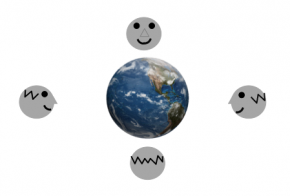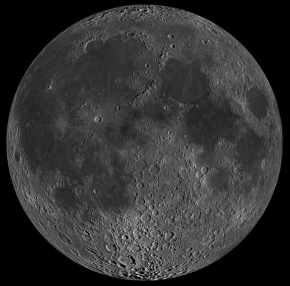Title
Weird Science: Tidal Locking—Why the Man in the Moon Can Always See You
NGSS Crosscutting Concepts
NGSS Disciplinary Core Ideas
SF Fig. 6.7. In this figure, a face represents the near side of the moon. The face is always turned towards Earth. This figure is not drawn to scale.
Image courtesy of National Oceanic and Atmospheric Administration (NOAA), modified by Joanna Philippoff
Some people see a face in the lunar mare, which is commonly referred to as “the man in the moon.” Due to the gravitational effect of the earth on the moon, the moon and the earth are tidally locked. This means that it takes the same amount of time for the moon to rotate once about its axis as it takes for the moon to make one orbit around the earth. The moon’s rotation and orbital period are both just under four weeks. This synchronous (or same) rotation causes one side of the moon (the side with “the man in the moon”) to always face Earth (SF Fig. 6.7). This is called the near side of the moon. Most of the major moons in our solar system rotate synchronously with their planets.
SF Fig. 6.8. (A) The side of the moon that faces Earth—the “near side”
Images courtesy of National Aeronautics and Space Administration (NASA)
SF Fig. 6.8. (B) The side of the moon that does not face Earth—“the far side.”
Images courtesy of National Aeronautics and Space Administration (NASA)
Because people can only see one side of the moon from Earth (the “near side”), no one knew what the other side of the moon (often called the “far side”) looked like until 1959, when photographs were transmitted from the Soviet spacecraft Luna 3 (SF Fig. 6.8).










